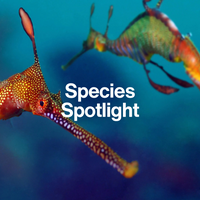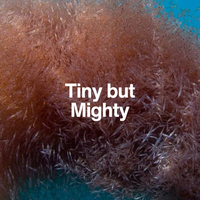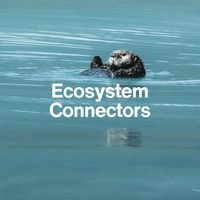The Ocean’s Impressionist
Mimic Octopus

With every move, this cephalopod becomes something else—an animal with no fixed form, and endless tricks up its tentacles.
Introduction
Meet the Mimic Octopus
The mimic octopus (Thaumoctopus mimicus) is one of the most astonishing illusionists in the animal kingdom. Found in the shallow, muddy coastal waters of Southeast Asia, this slender-bodied octopus doesn’t just change colour or texture—it changes identity.
With fluid, mesmerising movements, it can impersonate up to 15 different species, including lionfish, flatfish, jellyfish, and even sea snakes—all to avoid predators or confuse prey.

Fun Fact
The mimic octopus was only officially discovered in 1998—making it a fairly recent arrival to marine science.
Biology & Behaviour
Shape-Shifting Survival
Like all octopuses, the mimic octopus has chromatophores—pigment cells that allow it to change colour in an instant. But what makes it unique is its incredible body control. It can flatten, elongate, wave its arms, or coil them into specific shapes to take on the look and movement of completely different animals.
Some of its impersonations include:
- Flatfish, to blend in with the seafloor
- Venomous lionfish, to appear dangerous
- Sea snakes, to deter specific predators like damselfish
It chooses which animal to imitate based on the threat it faces—a level of decision-making that suggests complex behaviour.
It feeds on small crustaceans and fish, and hunts by creeping across the seabed or lunging into burrows to flush out prey.
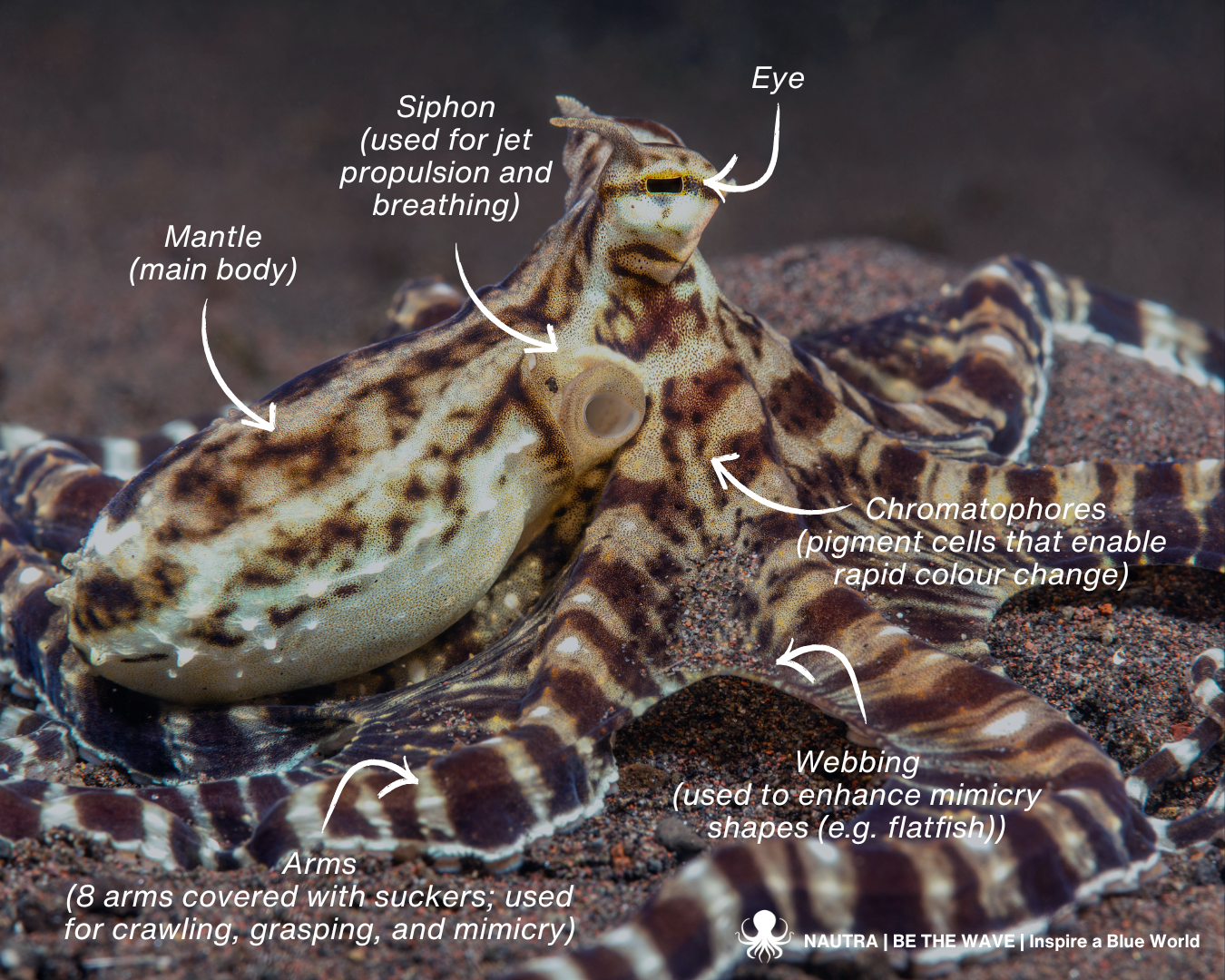
Reproduction
Hidden and Short-Lived
Like most octopuses, the mimic octopus has a short lifespan—usually only around 1–2 years.
Mating involves a quick coupling where the male uses a specialised arm to transfer sperm to the female. After laying strings of eggs, the female guards them until they hatch—and then she dies, her life ending in one final act of care.

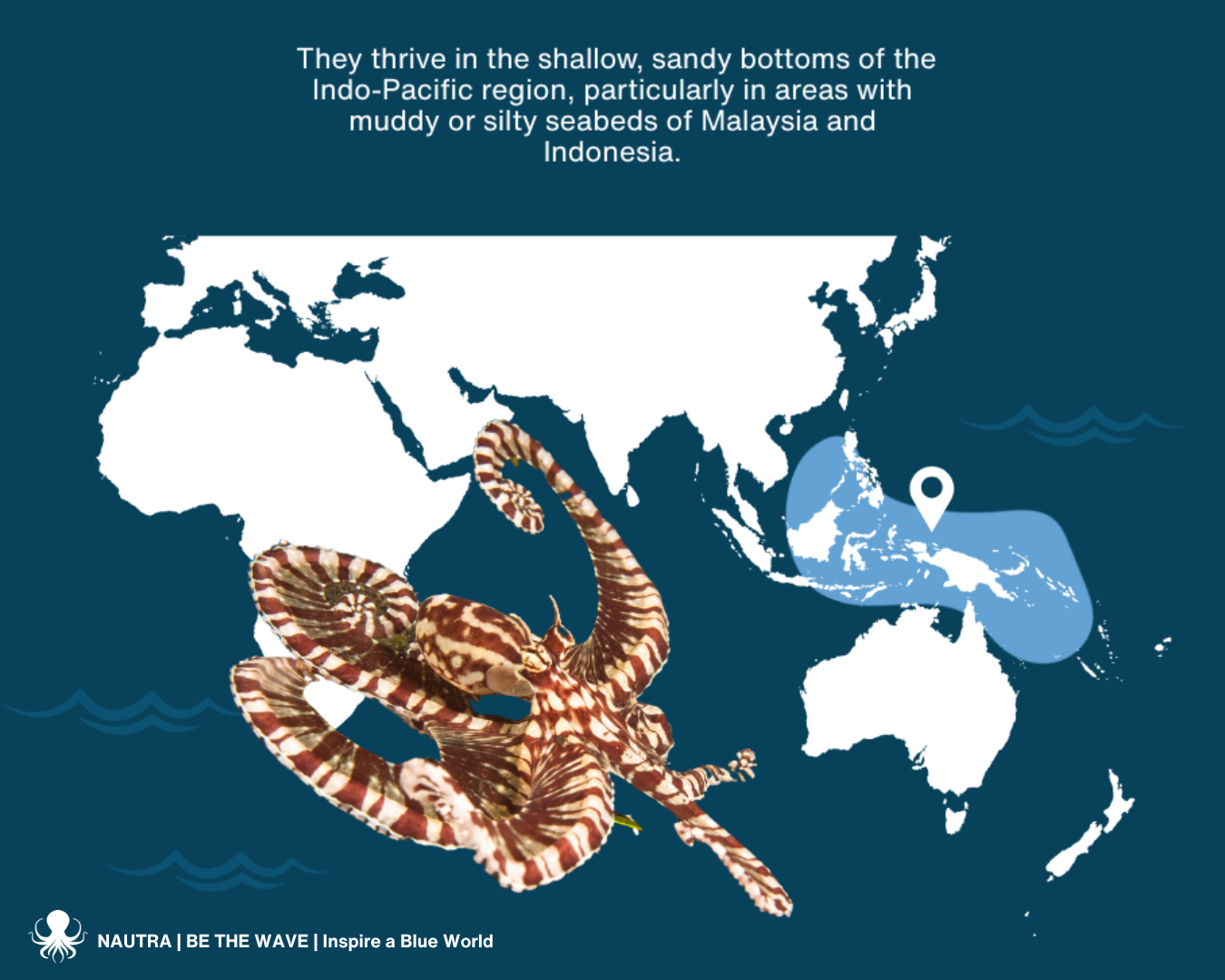
Conservation & Threats
A Tricky Creature in Trouble
Goblin sharks aren’t targeted by fisheries, but they occasionally get caught in deep-sea nets as bycatch. Their rarity and remote habitat make population monitoring difficult.
Potential threats include:
Trawling and habitat disturbance
Pollution and sediment runoff
Coastal development
Because it was discovered relatively recently, we still know very little about its population or breeding success.
Did you know?
This octopus can decide which species to impersonate depending on the type of predator approaching—a rare example of situational mimicry.
Why They Matter
Intelligence in Disguise
The mimic octopus reminds us that intelligence in the ocean isn’t just about size—it’s about adaptability. Its ability to deceive predators through mimicry shows the power of behaviour as a survival tool.
It challenges what we think we know about animal intelligence, and proves that even in murky waters, brilliance can hide in plain sight.

Species Overview

Species ID Card
Mimic Octopus
Want to take this species with you? Download our printable ID card to keep learning, share with others, or use in your classroom or ocean journal.
NEXT SPECIES
Meet the Coral Chameleon: Peacock Mantis Shrimp
Brilliant colours, lightning-fast punches, and eyes that see more than ours ever could—next up, the mantis shrimp that breaks records and boundaries.


